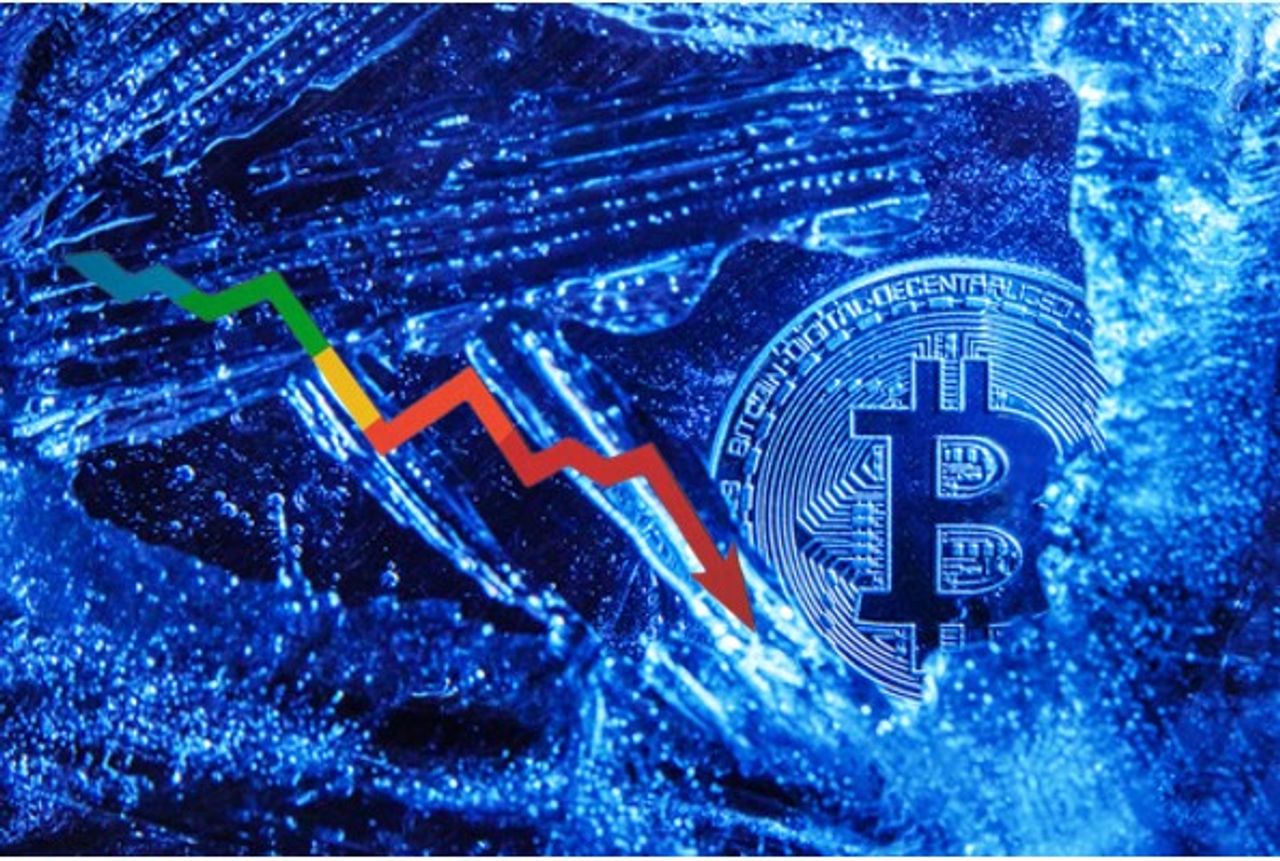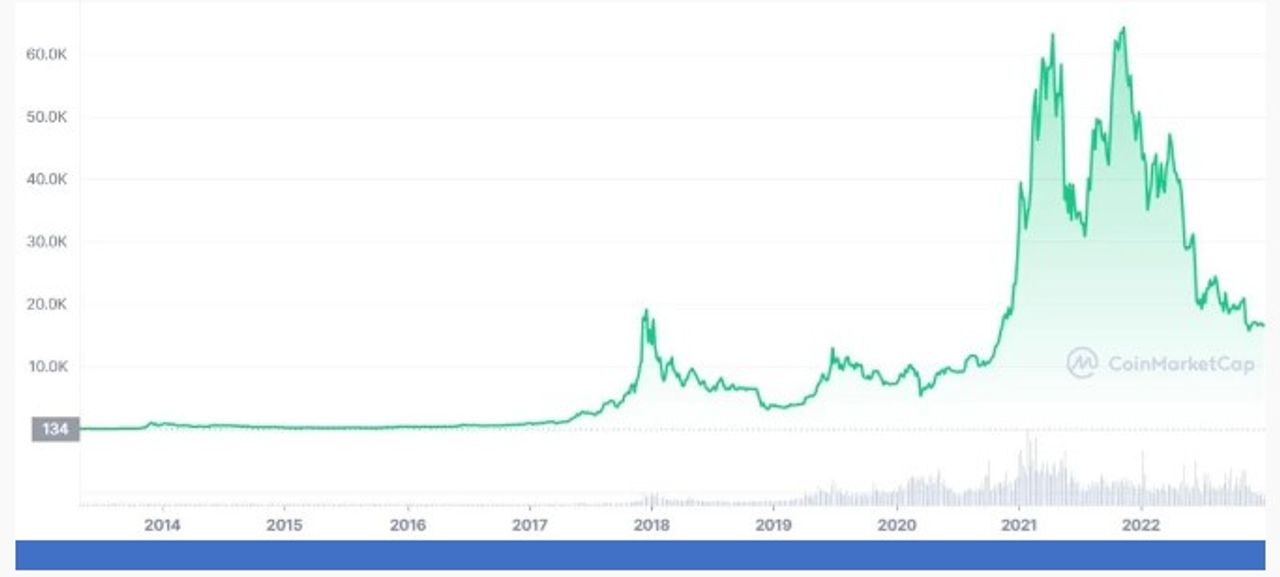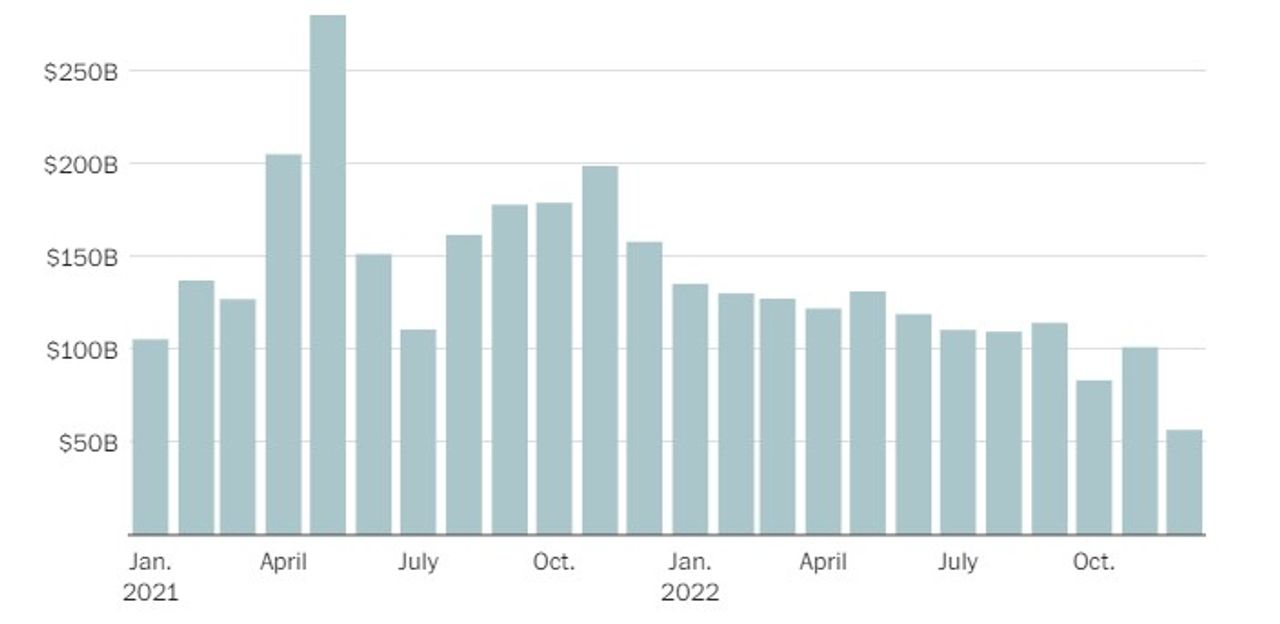Share on
- Copy link
Crypto winter is a phase of declining prices, reduced trading, and lower investor interest in the cryptocurrency industry.
Last updated Jul 4, 2023 at 11:22 PM
Posted Jul 4, 2023 at 11:38 AM

The cryptocurrency market has been a rollercoaster ride, with soaring highs and, at times, severe plunges. Cryptocurrency enthusiasts and investors have witnessed both exhilarating bull runs and severe market downturns. This “crypto winter” can be challenging and may get even experienced traders on edge. 2022 was a bad year for cryptocurrencies as $2 trillion was wiped off their value by a series of dramatic events such as the stablecoin market crash, the fall of FTX, and constant uncertainty surrounding crypto regulations.
The term “crypto winter” was coined by South African data analyst and digital asset enthusiast Eugéne Etsebeth in 2018, and it is loosely based on the concept of “winter is coming” from the popular HBO show Game of Thrones. In the show, the Stark family patriarch Ned Stark constantly warns his family about an upcoming winter accompanied by harsh conditions and the threat of deadly creatures known as “white walkers” that could threaten their existence. Similarly in the context of the cryptocurrency market, crypto winter is a prolonged period of market decline and uncertainty, characterized by bearish trends and a chilling atmosphere for investors. In the traditional stock market, a bearish trend is declared when the stocks lose their value by over 20%. However, in the crypto market, there is not any defined perimeter that defines a bearish trend because crypto markets are highly volatile, and price movements can be much more extreme compared to traditional stocks.
A crypto winter is not triggered by a single factor but rather by a combination of various factors or a series of bad events that collectively may result in a crypto winter. Some of these causes are:
There is a point to the crypto regulations and they are somewhat necessary for the overall stability of the crypto ecosystem. However, unnecessary over-regulation generates a sense of low confidence among traders which may result in crypto winter.
High-profile hacks and security breaches damage the reputation of cryptocurrency and may trigger a downturn in the market.
Negative news can have a major effect on overall cryptocurrency prices. For example, the decision by Tesla not to accept Bitcoin as a form of payment led to a significant drop in Bitcoin's price.
There are three main indicators of a crypto winter that can be helpful in determining when a crypto winter is impending.
A significant drop in cryptocurrency prices is a major indicator of crypto winter. Typically, the price drop initiates with Bitcoin; as other cryptocurrencies tend to follow Bitcoin's trend, their prices also experience a plunge, ultimately leading to a crypto winter.

Cryptocurrencies may lose more than half of their value from all-time highs during a crypto winter. Cryptocurrencies have seen many crypto winters since the inception of cryptocurrencies in 2009. For example, in December 2017, for the first time, Bitcoin touched its all-time high of $17800. However, in the next few months, the price gradually decreased and plummeted to $3200 in December 2018. Bitcoin lost approximately 82% of its value during that period and didn’t rise again for some time. However, in late 2021, Bitcoin broke all the records and soared to an all-time high of $70,000. Unfortunately, this price surge was no longer lasting and the crypto market experienced yet another prolonged period of decline as Bitcoin's value dropped below $20,000 again.
A decrease in the trading volume of multiple cryptocurrencies can indicate reduced market activity and investor interest.

Constant lowering of the trading volume of cryptocurrencies indicates that investors are stepping back and losing interest in the market. As a result, traders start selling their assets; this increase in sales further decreases prices as there is more supply than demand in the market. This process can result in a crypto winter.
Market capitalization, often referred to as the market cap, is calculated by multiplying the current price of a cryptocurrency by its total circulating supply. It represents the total value of all the coins or tokens in circulation. A constant and significant decrease in the total market capitalization of cryptocurrencies is often considered an indicator of a crypto winter. This indicates a general loss of value of cryptocurrencies which leads to reduced confidence among traders and a bearish sentiment in the crypto market.
It is true that a crypto winter might be tough and challenging for even experienced traders. However, it is also a great time to build your wealth as cryptocurrency prices are at their lowest, making it a great time to invest in cryptocurrencies with strong future growth prospects.
The first and foremost rule of investing is to diversify your portfolio and not to put all of your eggs into one basket. Diversifying your portfolio enables you to reduce the risks associated with a single coin or token. It is also advised to invest only what you can afford to lose.
In the dollar-cost averaging method, traders invest a fixed amount of money into a specific token regardless of its price. For example, you invest $100 into Litecoin every month no matter what its prices are. In this way, your $100 will buy you more Litecoin when prices are low and fewer when prices are high. This strategy helps investors to increase their crypto holdings consistently over time without much financial stress or emotional decision-making.
You never know when crypto winter is going to end. However, we know that a bearish trend doesn’t last forever and it is followed by a period of growth and opportunities. Avoid impulsive trading based on short-term market fluctuations and maintain a long-term perspective.
As crypto markets are highly volatile and prices can change in a matter of seconds, a balanced and well-designed trading strategy is necessary to mitigate these volatility risks and ensure that you profit from trades.
Cryptocurrencies are known for their extreme volatility, and their prices can reach an all-time high in a few months and plummet to their lowest ever shortly after that. We can fairly conclude that trading cryptocurrencies is not a faint heart trader's game. To ensure maximum returns and avoid potential losses, it is always advised to conduct due diligence and do your own research about the project you are going to invest in.